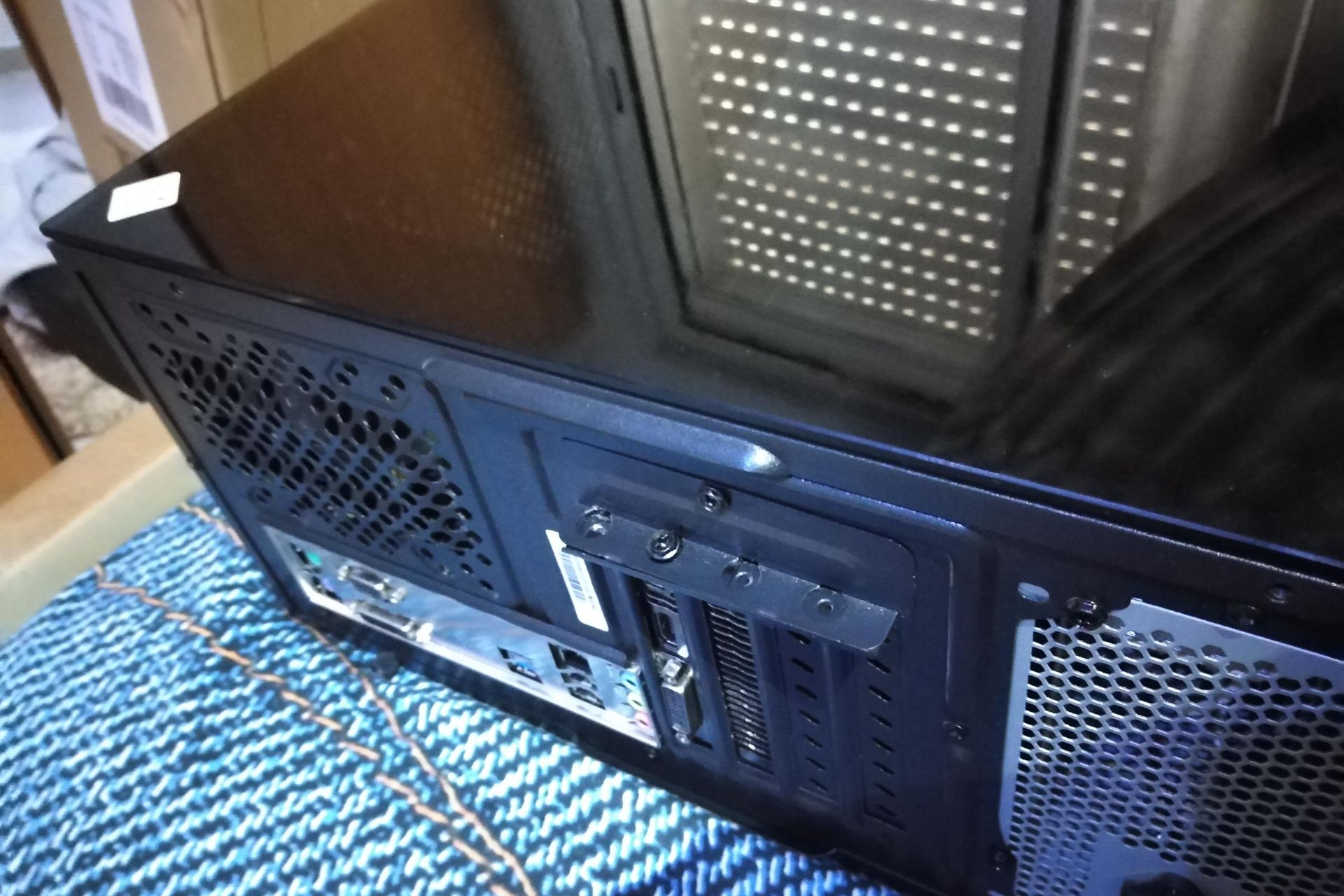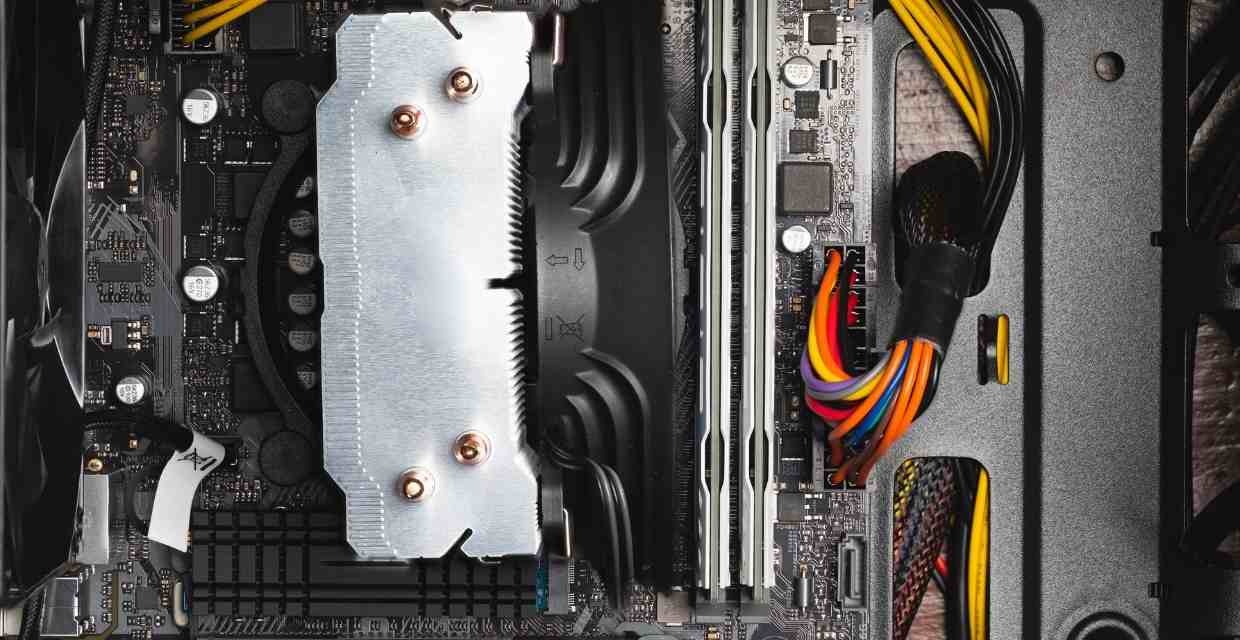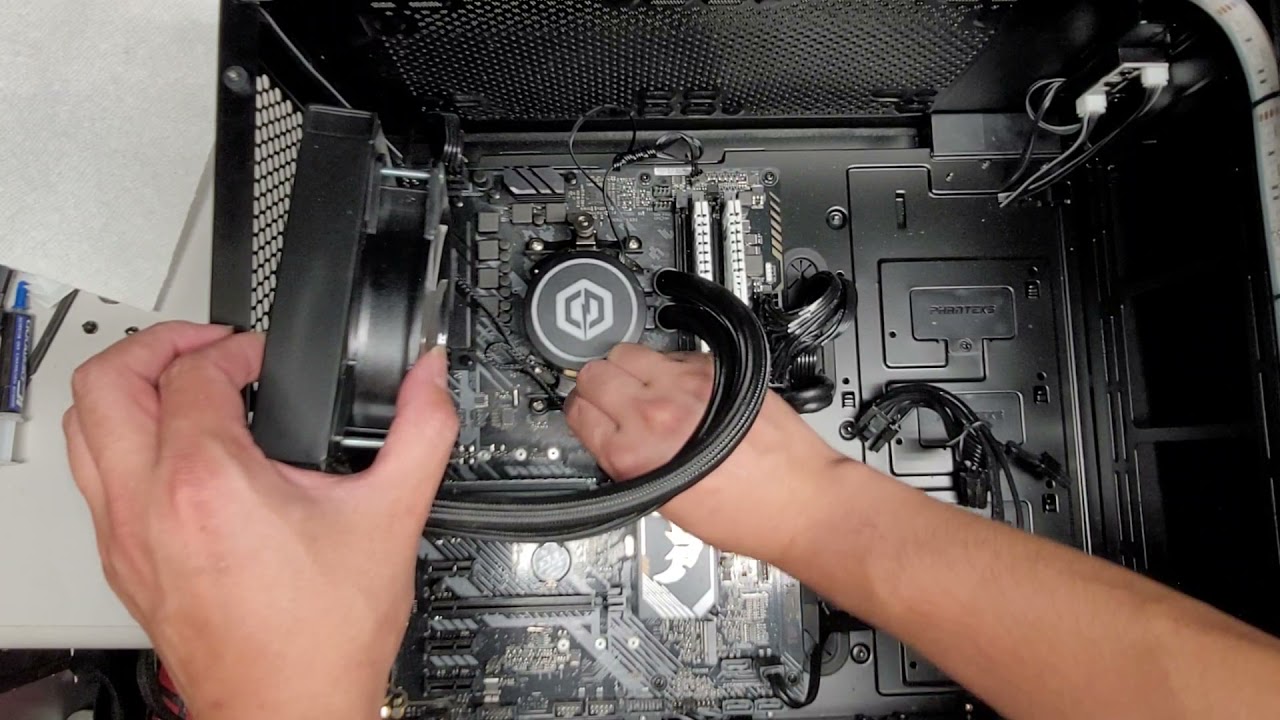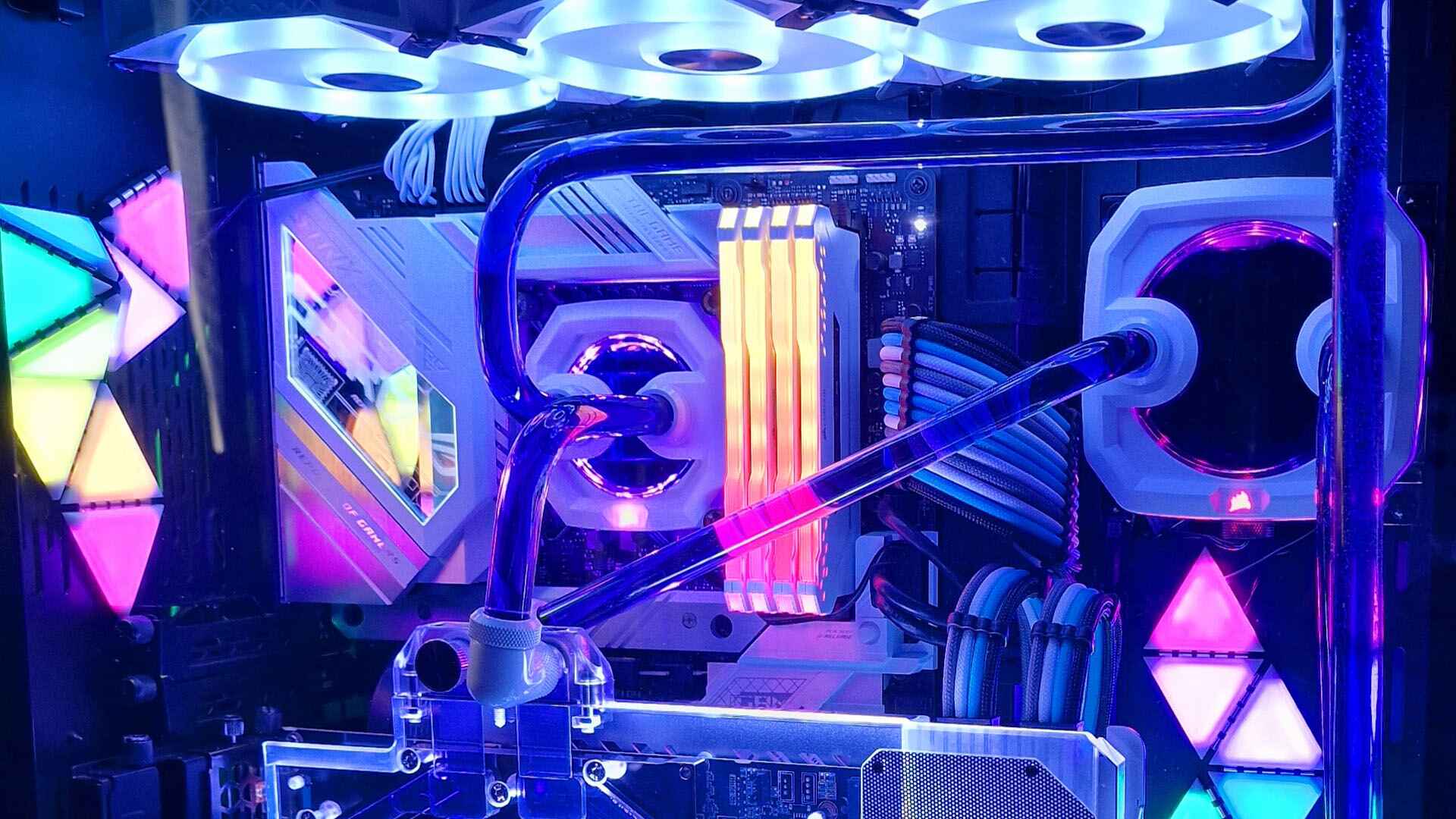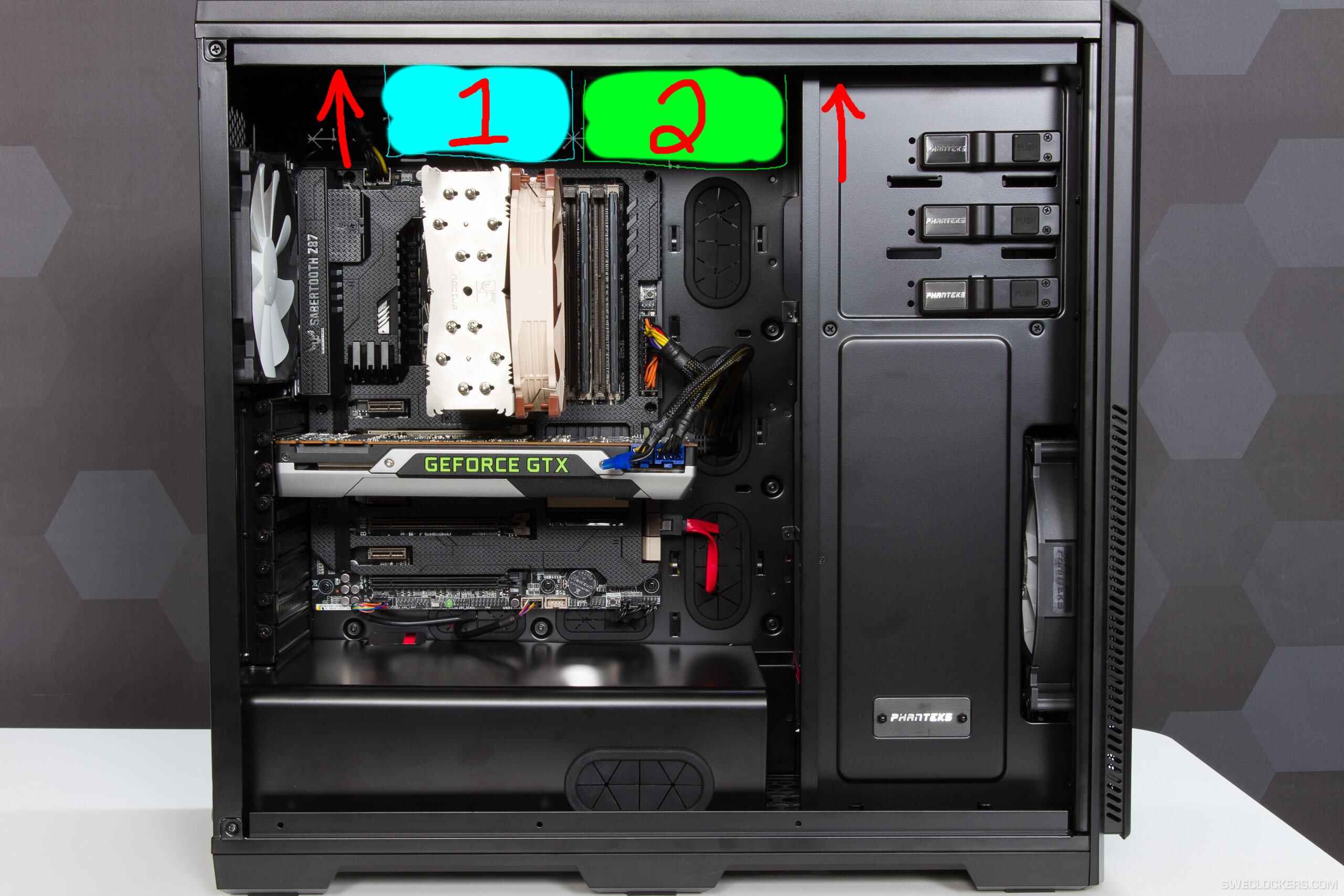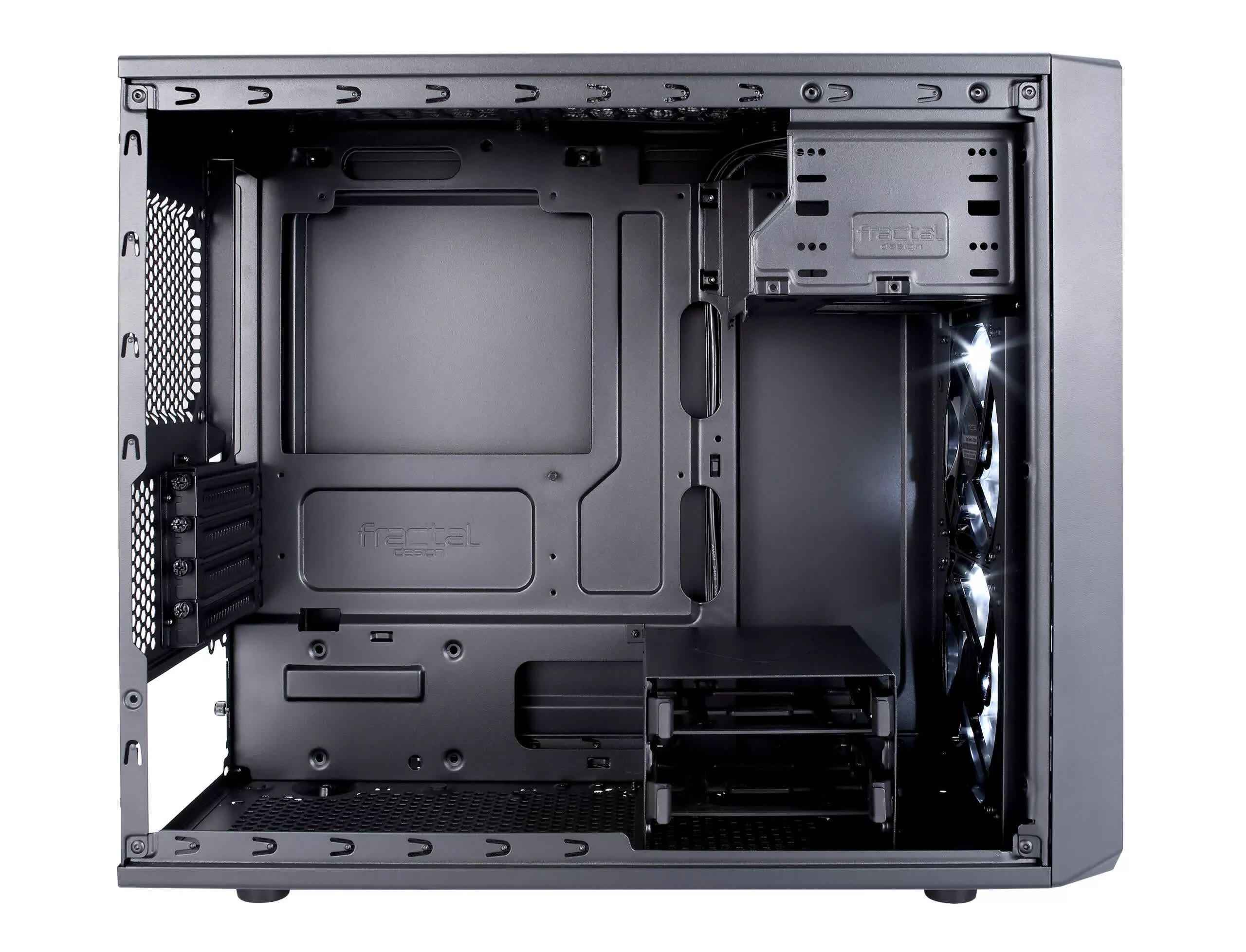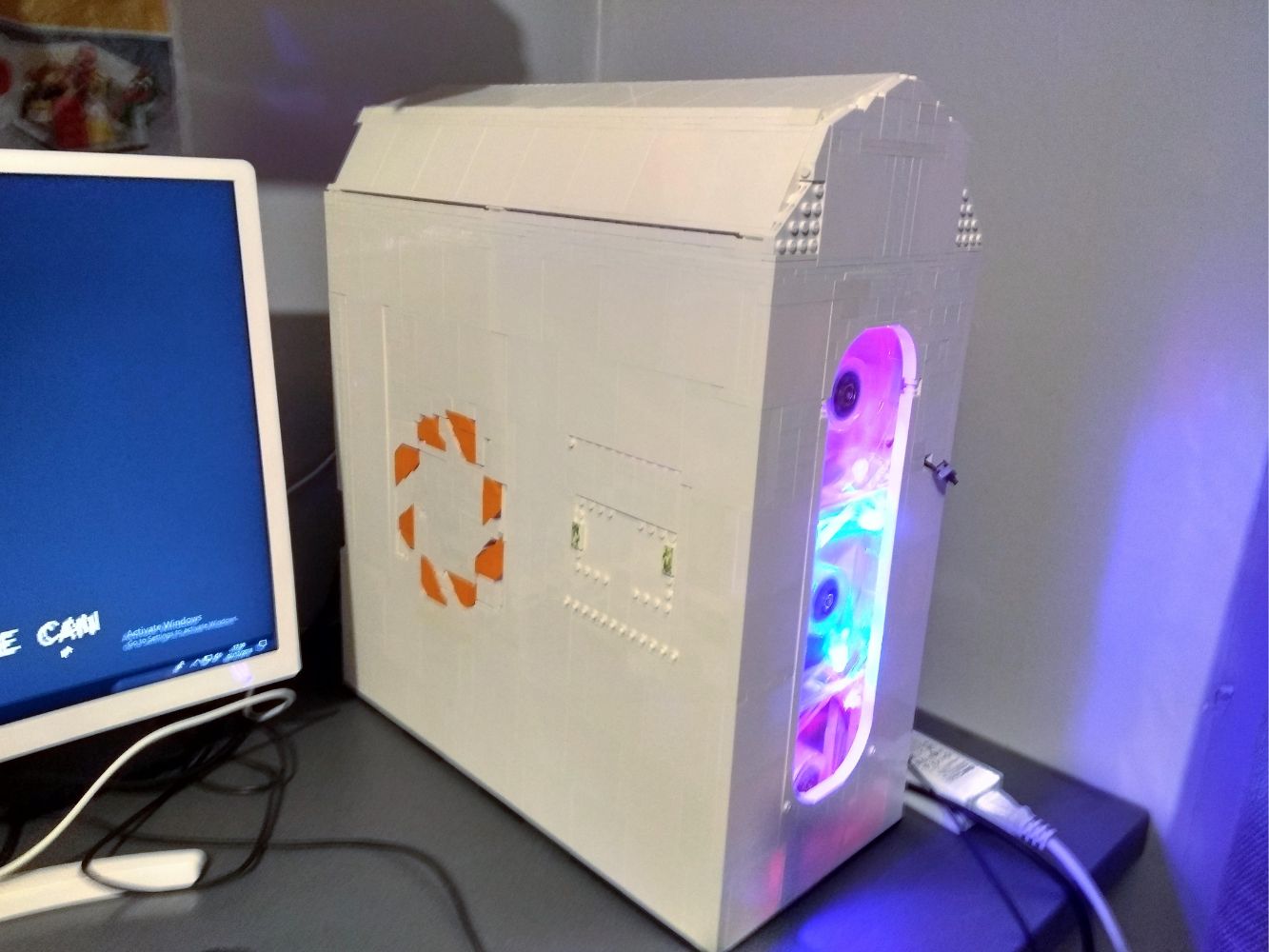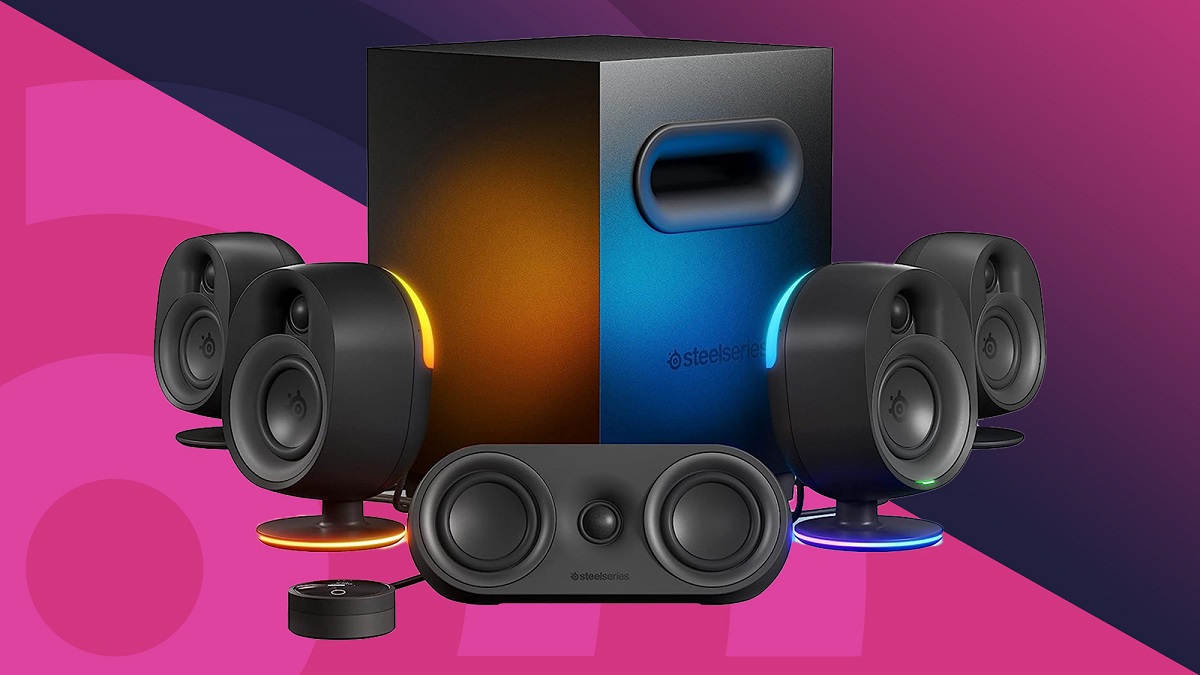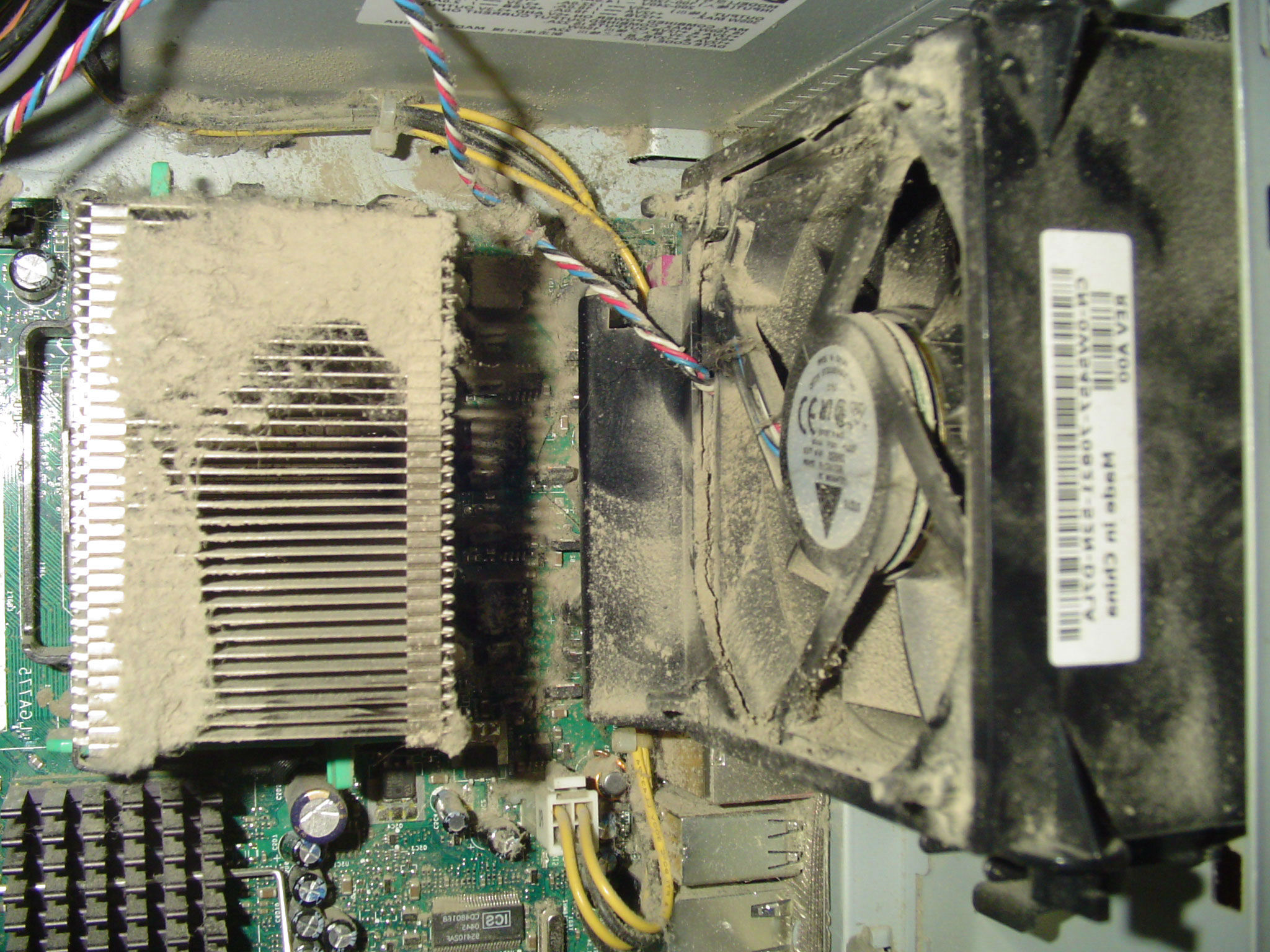Introduction
When it comes to building or upgrading a PC, one of the most crucial aspects is choosing the right components for the job. Whether you’re a technology enthusiast, a gamer, or a professional, understanding what can and cannot go inside a PC case is essential.
A PC case, also known as a computer chassis, houses all the internal components that make up a computer system. These components work together to create a functional and efficient machine. However, not all components are compatible with every PC case, and there are certain limitations to consider.
In this article, we will explore the various internal and external components that can or cannot be installed inside a PC case. We will also discuss the importance of proper airflow and cooling to ensure optimal performance and longevity.
By the end of this article, you will have a better understanding of the key components that make up a PC and their suitability for installation within a PC case. So, let’s delve into the world of PC hardware and discover what can and cannot go inside a PC case.
Internal Components
When it comes to building a PC, the internal components play a crucial role in determining the performance and capabilities of the system. Let’s take a look at some of the key internal components that can be installed inside a PC case:
-
Motherboard
The motherboard is the main circuit board that connects and allows communication between all other components in a computer system. It provides slots and connectors for attaching various components such as the CPU, RAM, and storage devices.
-
CPU (Central Processing Unit)
The CPU is often referred to as the brain of the computer. It performs the majority of the calculations and processes data in the system. When choosing a CPU for your PC, make sure it is compatible with the motherboard and adequately cooled to prevent overheating.
-
RAM (Random Access Memory)
RAM is responsible for temporarily storing data that the CPU needs to access quickly. It plays a crucial role in determining the speed and multitasking capabilities of the system. Ensure that the RAM you choose is compatible with the motherboard and has sufficient capacity to handle your computing needs.
-
GPU (Graphics Processing Unit)
The GPU is responsible for rendering and displaying graphics on your computer screen. It is especially important for gaming and graphics-intensive tasks. Make sure the GPU you choose is compatible with the motherboard and has adequate power requirements.
-
Storage Devices
Storage devices such as hard drives and solid-state drives (SSDs) are where you store your operating system, programs, and files. Ensure that the PC case has appropriate slots or bays to accommodate your chosen storage devices.
-
Power Supply Unit (PSU)
The PSU is responsible for supplying power to all the components in the system. Choose a PSU that has sufficient wattage to support your components and ensure it has the necessary connectors to power all the devices.
-
Cooling System
Adequate cooling is crucial to maintain optimal performance and prevent overheating. Install fans or liquid cooling systems to dissipate heat generated by the CPU and GPU. Ensure there is enough space inside the PC case to accommodate the cooling solution you choose.
These are just a few of the important internal components that can be installed inside a PC case. It’s important to consider compatibility, power requirements, and adequate cooling when selecting and installing these components to ensure a stable and efficient computer system.
Motherboard
The motherboard is the central component of a computer system that connects and allows communication between all other components. It provides slots and connectors for attaching various hardware components such as the CPU, RAM, and storage devices.
When choosing a motherboard for your PC, it is important to consider factors such as form factor, compatibility, and expansion slots. The form factor determines the physical size and layout of the motherboard, which must match the PC case you plan to use. Common form factors include ATX, Micro ATX, and Mini ITX.
Compatibility is crucial when selecting a motherboard. It needs to be compatible with the CPU socket type, RAM type, and other hardware components that you plan to install. Check the specifications of the motherboard and ensure it supports the specific components you have or plan to purchase.
Expansion slots are also an important consideration, especially if you plan to add additional cards, such as graphic cards or sound cards, to your system. Look for a motherboard that provides enough PCIe slots and other expansion options that meet your needs.
The motherboard also has various connectors for peripherals, including USB ports, audio ports, and networking ports. Ensure that the motherboard has an adequate number of these connectors to accommodate your devices.
Another key factor to consider is the power delivery capability of the motherboard. Different motherboards have different power requirements, and you need to ensure that your power supply unit (PSU) can provide sufficient power to the motherboard and other components.
Lastly, consider the quality and reliability of the motherboard manufacturer. Look for reputable brands known for producing reliable and well-supported motherboards.
Overall, the motherboard is a critical component that determines the compatibility and expandability of your PC system. Take the time to research and choose a motherboard that meets your requirements and supports the components you plan to install.
CPU (Central Processing Unit)
The CPU, or Central Processing Unit, is often referred to as the brain of a computer. It is responsible for executing instructions and performing calculations that drive the overall functionality and performance of the system.
When selecting a CPU for your PC, there are several factors to consider. The first is the socket type, which must be compatible with the motherboard you plan to use. Different CPUs have different socket types, so ensure that the CPU you choose matches the motherboard specifications.
Next, consider the number of cores and clock speed of the CPU. More cores allow for better multitasking performance, while higher clock speeds provide faster processing speeds. The specific needs of your applications and workloads will determine the ideal balance between core count and clock speed.
Another factor to consider is the cache size of the CPU. The cache acts as temporary storage for frequently accessed data, enabling faster access and execution of instructions. CPUs with larger cache sizes can help improve performance, especially in tasks that involve frequent data retrieval.
Intel and AMD are the two major CPU manufacturers. They offer a range of CPUs catering to different budgets and performance requirements. Consider your needs and budget when selecting between these two brands.
Cooling is also a crucial aspect of CPU selection. CPUs generate heat during operation, and adequate cooling is necessary to prevent overheating. You can choose between air cooling (using a CPU cooler with a heat sink and fan) or liquid cooling (using a liquid-based cooling system). Consider the space inside your PC case and the level of cooling required for your chosen CPU.
Lastly, consider the power requirements and efficiency of the CPU. Ensure that your power supply unit (PSU) can provide sufficient power to the CPU, taking into account its power consumption and any potential overclocking.
Choosing the right CPU is essential for achieving the desired performance in your PC. Take the time to research and compare different models, considering factors such as socket type, core count, clock speed, cache size, cooling requirements, and power efficiency, to make an informed decision that meets your specific needs and budget.
RAM (Random Access Memory)
RAM, or Random Access Memory, is a crucial component of a computer system that provides temporary storage for data that the CPU needs to access quickly. It plays a vital role in determining the system’s speed, multitasking capabilities, and overall performance.
When choosing RAM for your PC, there are a few key factors to consider. The first is the type of RAM. Common types include DDR4 and DDR3. Ensure that the RAM you choose is compatible with the motherboard you plan to use, as different motherboards support different RAM types.
Capacity is another important consideration. The amount of RAM you need depends on your specific requirements and the types of tasks you perform on your computer. For casual users, 8GB to 16GB of RAM is generally sufficient. However, if you are a gamer, content creator, or work with resource-intensive applications, you may benefit from 32GB or more of RAM.
Another factor to consider is the frequency or speed of the RAM. RAM speed is measured in megahertz (MHz). Higher RAM speeds can contribute to better overall system performance, especially in tasks that involve large data transfers or heavy multitasking. However, it is important to note that the impact of RAM speed on performance may vary depending on the specific applications and workloads.
Timings, or latency, are also worth considering. RAM timings indicate the time it takes for the RAM to respond to the CPU’s request for data. Lower latency values generally result in faster response times and improved overall performance. However, the impact of RAM timings on real-world performance is often minimal and may not justify a significant price difference.
Lastly, consider the form factor of the RAM modules. Most desktop computers use DIMM (Dual In-Line Memory Module) RAM, while smaller form factors like SO-DIMM (Small Outline DIMM) are typically found in laptops and compact systems. Ensure that the RAM form factor matches the slots on your motherboard.
In summary, when selecting RAM for your PC, consider the RAM type, capacity, frequency, timings, and form factor. Take into account your specific needs, budget, and the compatibility with your motherboard. Choosing the right RAM will help ensure smooth multitasking, faster data access, and overall improved performance for your computer system.
GPU (Graphics Processing Unit)
The GPU, or Graphics Processing Unit, is a crucial component for computers that are used for gaming, graphic design, video editing, and other graphics-intensive tasks. It is responsible for rendering and displaying graphics on your computer screen, ensuring smooth and immersive visuals.
When choosing a GPU for your PC, there are several factors to consider. The first is compatibility with your motherboard. Ensure that the GPU you choose has the correct interface (such as PCIe) and is compatible with the available slots on your motherboard.
The performance of a GPU is determined by various factors, including the number of CUDA cores (for NVIDIA GPUs) or Stream Processors (for AMD GPUs), clock speed, and VRAM capacity. More CUDA cores or Stream processors generally indicate higher performance capabilities, while higher clock speeds can result in faster rendering and processing of graphics. VRAM, or Video RAM, is dedicated memory on the GPU that stores textures, shaders, and other graphic data.
If you are a gamer or work with graphics-intensive applications, consider selecting a GPU that has sufficient power to handle your desired resolution and graphics settings. High-end GPUs offer better performance and are capable of driving higher resolutions and running demanding games or software with ease.
Cooling is another crucial aspect of a GPU. The GPU can generate a significant amount of heat during operation, and adequate cooling is necessary to prevent overheating. Look for GPUs with effective cooling solutions, such as large heatsinks and multiple fans, or consider installing aftermarket cooling solutions if necessary.
Price is an important consideration when choosing a GPU, as high-end models can be quite expensive. Set a budget and strike a balance between your desired performance and your financial limitations. It’s worth noting that GPUs tend to evolve rapidly, and what may be considered high-end today could become mid-range in a short period of time.
In summary, when selecting a GPU for your PC, consider factors such as compatibility with your motherboard, performance specifications (including CUDA cores, clock speed, and VRAM capacity), cooling solutions, and your budget. A powerful GPU will provide smooth, high-quality graphics for gaming and other graphics-intensive tasks, enhancing your overall computing experience.
Storage Devices
Storage devices are an essential component of a computer system as they provide the means to store and retrieve data. There are different types of storage devices available, each with its own advantages and considerations.
The two most common types of storage devices are hard disk drives (HDDs) and solid-state drives (SSDs). HDDs use spinning disks and magnetic heads to read and write data, while SSDs use flash memory technology for faster and more reliable data storage.
When choosing storage devices for your PC, consider factors such as capacity, speed, and reliability. Capacity determines the amount of data that can be stored on the device. SSDs typically offer lower capacities but provide faster access times, while HDDs provide larger capacities but slower access times.
Another consideration is the speed of the storage device. SSDs are known for their high-speed performance, providing faster boot times, quicker application loading, and improved overall system responsiveness. HDDs, on the other hand, are generally slower but are more cost-effective for larger capacities.
Reliability is crucial when it comes to storage devices, as the loss of data can be devastating. Both SSDs and HDDs have their own reliability considerations. SSDs have no moving parts, making them more resistant to shock and vibration, but they have a limited number of write cycles before they may start to degrade in performance. HDDs, while more prone to mechanical failure, can often be recovered with professional data recovery services if a failure occurs.
It’s also important to assess your specific needs before choosing a storage device. If you work with large files or require fast access to data, investing in an SSD for your operating system and frequently used applications can greatly enhance performance. You can complement it with a larger HDD for mass storage or less frequently accessed files.
Finally, consider the physical form factor of the storage devices and ensure that they are compatible with the slots or bays available in your PC case. Common form factors include 2.5-inch and 3.5-inch drives for HDDs, while SSDs come in various form factors such as 2.5-inch, M.2, and PCIe add-in cards.
In summary, when selecting storage devices for your PC, consider factors such as capacity, speed, reliability, and your specific storage needs. Understanding the differences between HDDs and SSDs will help you make an informed decision that suits your budget and performance requirements.
Power Supply Unit (PSU)
The Power Supply Unit (PSU) is a critical component of a computer system as it provides the necessary electrical power to all the other components. Choosing the right PSU is essential for ensuring stable and reliable operation of your PC.
When selecting a PSU, there are a few key factors to consider. The first is the wattage rating. The wattage of the PSU determines how much power it can supply to your system. The wattage you need depends on the power requirements of your components, including the CPU, GPU, and other peripherals. It is important to choose a PSU with sufficient wattage to handle the power demands of your system, taking into account any potential upgrades or additions in the future.
The efficiency of the PSU is another important consideration. PSU efficiency is measured as a percentage and indicates how effectively the PSU converts AC power from your wall outlet into DC power used by your components. Look for PSUs with high efficiency ratings, such as 80 Plus Bronze, Silver, Gold, or Platinum, as they are more energy-efficient and generate less heat.
Modularity is a feature that allows you to connect only the necessary cables to your components, reducing cable clutter inside your PC case. Modular PSUs come in three variations: non-modular, semi-modular, and fully modular. Non-modular PSUs have all cables permanently attached, while semi-modular PSUs have some cables detachable, and fully modular PSUs allow you to connect only the necessary cables as needed. Choose the type of modularity that best fits your cable management needs.
The PSU’s reliability, brand reputation, and warranty should also be considered. Look for reputable PSU manufacturers known for producing reliable and high-quality power supplies. Additionally, ensure that the PSU comes with a sufficient warranty period to protect your investment and provide peace of mind.
Adequate cooling is crucial for the PSU to ensure optimal performance and longevity. PSUs typically come with built-in fans to dissipate heat. Ensure that your PC case has proper ventilation and space for the PSU, and consider the airflow in your system to prevent overheating.
Lastly, consider the connectors and cables provided by the PSU. Ensure that it has the necessary connectors for your components, including the motherboard, CPU, GPU, and storage devices. Having the correct cables and connectors will ensure compatibility and ease of installation.
In summary, when selecting a PSU for your PC, consider factors such as wattage, efficiency, modularity, reliability, cooling, and connectors. Choosing a high-quality PSU with sufficient power and efficiency will provide stable power delivery, reduce energy consumption, and safeguard your components from power-related issues.
Cooling System
Adequate cooling is crucial for maintaining optimal performance, stability, and longevity of your PC. As the components of a computer generate heat during operation, a cooling system is necessary to dissipate that heat and prevent overheating.
There are several components of a cooling system to consider when building or upgrading your PC:
-
CPU Cooler
The CPU Cooler is responsible for cooling the Central Processing Unit (CPU). It can come in various forms, including air coolers with heat sinks and fans, or liquid coolers utilizing a combination of a radiator, pump, and water or coolant. Choose a CPU cooler that matches the cooling requirements of your CPU and fits within the constraints of your PC case.
-
Case Fans
Case fans help to circulate air within the PC case, expelling hot air and bringing in cooler air. They are usually mounted at the front, rear, or top of the case. Consider the size, number, and airflow capacity of case fans to ensure proper ventilation and cooling of your components.
-
GPU Cooler
The Graphics Processing Unit (GPU) also generates a significant amount of heat, especially during gaming or other graphics-intensive tasks. Most GPUs come with their own coolers, typically consisting of fans and heat sinks. Ensure that your GPU cooler is sufficient for keeping the GPU temperatures within acceptable levels.
-
Thermal Paste
Thermal paste is a heat-conductive compound applied between the CPU and the CPU cooler to improve heat transfer. Applying an appropriate amount of thermal paste and ensuring proper contact between the CPU and cooler can help maximize cooling efficiency.
-
Cable Management
Proper cable management within your PC case can contribute to better airflow and cooling. Organize and route your cables neatly to prevent obstruction of airflow and to promote efficient cooling throughout your system.
It’s essential to monitor and manage your system’s temperatures to ensure effective cooling. Utilize software or hardware monitoring tools to keep an eye on the temperatures of your CPU and GPU. If temperatures are consistently high, consider increasing the airflow within your PC case, upgrading your cooling components, or adjusting fan speeds.
Additionally, periodically clean the fans and heat sinks to remove accumulated dust and debris. Dust buildup can hinder airflow and reduce cooling efficiency. Keep your system clean to maintain optimal cooling performance.
In summary, a well-designed and implemented cooling system is crucial for maintaining the performance, stability, and longevity of your PC. Consider the cooling requirements of your components, including the CPU and GPU, and choose cooling solutions such as CPU coolers, case fans, and proper cable management to ensure efficient cooling and prevent overheating.
External Components
When it comes to using a computer, there are several external components that enhance functionality and provide a better user experience. These components, which are not housed inside the PC case, include peripherals and devices that connect to your computer system. Let’s explore some of the key external components:
-
Monitors
A monitor is an essential external component that displays the visual output of your computer. There are different types of monitors available, including standard LED monitors, curved monitors, and high-resolution monitors. Consider factors such as size, resolution, refresh rate, and color accuracy when selecting a monitor that suits your needs.
-
Keyboard and Mouse
A keyboard and mouse are input devices that allow you to interact with your computer. Keyboards come in various types, including mechanical and membrane keyboards, each offering a different typing experience. Mice also have different designs, such as wired or wireless, and can feature additional buttons for specialized tasks. Choose a keyboard and mouse that provide comfort, reliability, and functionality for your specific needs.
-
Speakers
Speakers are used for audio output and play a vital role in providing an immersive multimedia experience. Consider the audio quality, power output, and connectivity options when selecting speakers. You may also opt for headphones or a headset for a more private listening experience.
-
USB Devices
USB devices include peripherals such as external hard drives, flash drives, printers, scanners, and other accessories that connect via USB ports. Ensure that your computer has sufficient USB ports to accommodate your external devices and consider the transfer speeds and compatibility when selecting USB devices.
-
Network Card
A network card, also known as a network adapter or Ethernet card, enables your computer to connect to a local area network (LAN) or the internet. Most modern motherboards come with a built-in network card, but you may need to install a separate network card if you require specific connectivity options.
These are some of the key external components that enhance the functionality and usability of your computer system. It is important to consider your specific needs and preferences when selecting external components, taking into account factors such as display quality, ergonomic design, audio output, connectivity options, and compatibility with your computer system.
Monitors
Monitors are an essential external component of a computer system that provides visual output and allows users to view and interact with their digital content. When choosing a monitor, there are several factors to consider to ensure an optimal viewing experience.
The first factor to consider is the size of the monitor. Monitors are available in various sizes, ranging from compact 20-inch monitors to large 32-inch or even larger displays. Consider the available desk space and your viewing preferences when deciding on the size of your monitor.
The resolution of the monitor is another important aspect to consider. Resolution refers to the number of pixels on the screen and has a direct impact on the sharpness and clarity of the images displayed. Common resolutions include Full HD (1920 x 1080), Quad HD (2560 x 1440), and Ultra HD or 4K (3840 x 2160). Higher resolutions offer more detailed visuals but may require more powerful hardware to drive them effectively.
Refresh rate is another consideration, especially for gamers or those who work with fast-paced visuals. The refresh rate refers to the number of times the monitor updates the image per second, measured in Hertz (Hz). Higher refresh rates, such as 144Hz or 240Hz, provide smoother motion and reduced motion blur.
Color accuracy is crucial for tasks such as graphic design, photo editing, or video production. Look for monitors that support a wide color gamut, such as sRGB or Adobe RGB, for accurate color representation. Consider monitors with advanced color calibration features or factory calibration for optimal color accuracy out of the box.
Connectivity options are another key consideration. Most monitors offer HDMI, DisplayPort, and sometimes VGA or DVI ports. Ensure that the monitor has the necessary ports to connect to your computer system, as well as any additional devices you plan to use.
Ergonomics is essential for prolonged and comfortable use. Opt for monitors with adjustable stands that allow you to customize the height, tilt, and swivel to find your optimal viewing position. Some monitors also offer features like built-in speakers, USB hubs, and support for VESA mounting.
Lastly, consider your budget when selecting a monitor. Prices can vary significantly based on factors such as size, resolution, refresh rate, and additional features. Set a budget that aligns with your requirements and prioritize the features that are most important to you.
In summary, when choosing a monitor, consider factors such as size, resolution, refresh rate, color accuracy, connectivity options, ergonomic features, and budget. By considering these factors, you can select a monitor that offers a visually pleasing and immersive experience for your computing needs.
Keyboard and Mouse
Keyboards and mice are essential peripherals that allow users to interact with their computer systems. Choosing the right keyboard and mouse can greatly enhance your productivity and overall computing experience. Consider the following factors when selecting these external components:
Keyboards come in various types and layouts to cater to different needs and preferences. Mechanical keyboards, for example, provide tactile feedback and are highly durable, making them popular among gamers and typists. Membrane keyboards, on the other hand, offer a quieter typing experience and are more budget-friendly. Consider your typing style, whether you require additional features like RGB lighting or programmable macro keys, and choose a keyboard that suits your needs.
Mice also come in different forms, including wired and wireless options, as well as different designs for gaming or general use. Consider factors such as ergonomics, sensitivity (measured in DPI or dots per inch), programmable buttons, and tracking technology (optical or laser) when choosing a mouse. Test different mice to find a comfortable grip and smooth movement for your hand size and usage requirements.
Connectivity is an important consideration for both keyboards and mice. Most keyboards and mice use USB connections, but wireless options are also available, often utilizing Bluetooth or proprietary wireless technology. Ensure that your computer system has the necessary ports or wireless connectivity to support your chosen keyboard and mouse.
For gamers, specialized gaming keyboards and mice offer additional features such as customizable backlighting, macro support, and adjustable DPI settings. These features can enhance gaming performance and provide a better gaming experience. Consider gaming-specific keyboards and mice if you frequently engage in gaming activities.
Ergonomics play a vital role in comfort and long-term use. Look for keyboards and mice that offer ergonomic designs, with features like wrist rests, adjustable angles, and contoured shapes. Ergonomic keyboards with split or curved layouts can help alleviate wrist and hand strain, particularly for extended typing sessions.
Lastly, consider your budget when selecting a keyboard and mouse. Prices can vary based on the features, build quality, and brand. Set a budget that aligns with your needs and prioritize the features that are most important to you.
In summary, when choosing a keyboard and mouse, consider factors such as keyboard type, mouse design, connectivity options, gaming features (if applicable), ergonomics, and budget. Selecting the right keyboard and mouse will improve your typing comfort, precision, and overall user experience as you interact with your computer system.
Speakers
Speakers are an essential external component of a computer system that provide audio output, enhancing the overall multimedia experience. When selecting speakers for your computer, there are several factors to consider:
Audio Quality is one of the most important factors to consider. Look for speakers that offer clear and balanced sound reproduction across different frequencies. Consider the wattage and the size of the drivers, as larger drivers generally produce more powerful and fuller sound.
Speaker Configuration refers to the number of channels or speakers in a setup. Common configurations include 2.0 (two speakers), 2.1 (two speakers with a separate subwoofer), and 5.1 or 7.1 surround sound systems (multiple speakers and subwoofers for a more immersive audio experience). Choose a configuration that suits your needs, taking into account the available space and desired audio output.
Connectivity options are important to ensure compatibility with your computer system. Most speakers connect via auxiliary or headphone jacks, while others offer options such as USB or Bluetooth connectivity. Consider the available ports on your computer and the convenience of wireless connections when choosing speakers.
Power Output is measured in watts (W) and determines the speaker’s volume and ability to fill a room with sound. Make sure the power output matches your intended use – speakers with higher wattage provide louder audio output and are better suited for larger spaces.
Design and Aesthetics also play a role in the selection of speakers. Consider the size, shape, and color of the speakers to ensure they fit well with your workspace or room decor. Some speakers also come with additional features such as LED lighting or attractive finishes.
Price is another important consideration. Speakers are available in a wide range of prices, from budget-friendly options to high-end models. Determine your budget and look for speakers that offer the best audio quality and features within that range.
Lastly, take the opportunity to listen to the speakers if possible, or read reviews from trusted sources, to assess the audio quality and performance before making a final decision. Personal preference and the intended use of the speakers may influence your choice.
In summary, when choosing speakers for your computer, consider factors such as audio quality, speaker configuration, connectivity options, power output, design, and your budget. Finding speakers that offer high-quality sound and meet your preferences will significantly enhance your audio experience while using your computer system.
USB Devices
USB devices are external components that utilize the Universal Serial Bus (USB) interface to connect and interact with your computer system. They encompass a wide range of peripherals and accessories that enhance the functionality and expand the capabilities of your computer. When considering USB devices, keep the following factors in mind:
Peripheral Devices: USB devices include peripherals such as external hard drives, flash drives, printers, scanners, keyboards, mice, and game controllers. Assess your needs and determine which peripherals are essential for your specific tasks and activities.
Storage Capacity: External hard drives and flash drives are popular USB storage devices. Consider the storage capacity you require based on factors such as the size of your files, the need for portability, and the frequency of data transfer. Higher-capacity storage devices often come at a higher price point.
Data Transfer Rates: USB devices offer different data transfer speeds. The USB 2.0 standard offers data transfer rates of up to 480 Mbps, while USB 3.0 and USB 3.1 provide faster speeds of up to 5 Gbps and 10 Gbps, respectively. Assess your requirements for quick data transfer when selecting USB devices.
Connectivity: Check if your computer system has sufficient USB ports to accommodate the USB devices you plan to use. Consider the type of USB ports available, such as USB Type-A or USB Type-C, and ensure compatibility between the USB device and your computer’s USB ports.
Additional Features: USB devices may offer additional features that cater to specific needs. For example, external hard drives with hardware encryption provide additional security for your data. Printers with built-in Wi-Fi capabilities offer wireless printing convenience. Consider any special features that may enhance the usability and functionality of the USB devices.
Compatibility: Make sure that the USB devices you choose are compatible with your operating system and any specific hardware requirements. Check the device specifications or consult with the manufacturer to ensure compatibility.
Price: USB devices range in price depending on their features, quality, and brand. Determine your budget and prioritize the USB devices that are most essential for your needs while considering factors such as reliability and performance.
Reading reviews and user feedback can also provide valuable insights into the quality and performance of USB devices. Evaluate the reputation and reliability of the manufacturer before making a final decision.
In summary, when selecting USB devices for your computer, consider factors such as the specific peripherals you require, storage capacity, data transfer rates, connectivity options, additional features, compatibility, price, and brand reputation. By considering these factors, you can choose USB devices that meet your needs and enhance your overall computing experience.
Network Card
A network card, also known as a network adapter or Ethernet card, is an external component that enables your computer to connect to a local area network (LAN) or the internet. It plays a vital role in establishing a stable and reliable network connection for your computer system. When considering a network card, take the following factors into account:
Wired or Wireless: Network cards are available in wired (Ethernet) and wireless (Wi-Fi) options. Wired connections offer reliable and stable network connectivity with high speeds, making them ideal for gaming, streaming, or heavy data transfers. Wireless connections provide more flexibility and convenience, allowing you to connect to Wi-Fi networks without the need for physical Ethernet cables.
Interface and Compatibility: Ensure that the network card you choose is compatible with your computer’s available expansion slots or USB ports. Common interface options include PCIe (Peripheral Component Interconnect Express) for internal expansion cards or USB for external network adapters.
Speed and Bandwidth: Consider the speed and bandwidth capabilities of the network card. For Ethernet cards, look for options that support Gigabit Ethernet (10/100/1000 Mbps) or higher to ensure fast and reliable network connections. For wireless network cards, check for compatibility with the latest Wi-Fi standards such as 802.11ac or 802.11ax, which offer faster speeds and better network coverage.
Antennas and Range: If you opt for a wireless network card, consider the number and design of the antennas. Multiple antennas can provide better network reception and improved signal strength. Look for network cards with adjustable or detachable antennas that allow you to optimize the signal strength and range to suit your needs.
Security Features: Network cards may offer additional security features, such as support for WPA3 encryption, which provides a higher level of security for your wireless network connections. If security is a concern, ensure that the network card supports the latest encryption protocols to keep your data secure.
Brand and Software Support: Consider the reputation and reliability of the network card manufacturer. Look for network cards from reputable brands that provide regular driver updates and software support. This ensures compatibility with your operating system and allows you to benefit from the latest features and enhancements.
Budget: Like any other external component, consider your budget when selecting a network card. Prices can vary based on the brand, interface, features, and performance. Determine your networking requirements and allocate a budget that meets your needs without sacrificing quality and reliability.
Research customer reviews and user experiences to gauge the performance and reliability of the network card you are considering. This can help you make an informed decision and choose a network card that offers the best network connectivity and performance for your computer system.
In summary, when selecting a network card for your computer, consider factors such as wired or wireless connectivity, interface compatibility, speed and bandwidth capabilities, antennas and range, security features, brand reputation, and your budget. Choosing a reliable network card ensures stable and efficient network connectivity, whether for gaming, streaming, or general internet use.
Conclusion
In conclusion, understanding the various components that can and cannot go inside a PC case is crucial when building or upgrading a computer system. By carefully selecting the internal components such as the motherboard, CPU, RAM, GPU, storage devices, power supply unit, and cooling system, you can ensure compatibility, optimize performance, and prolong the lifespan of your PC.
External components such as monitors, keyboards, mice, speakers, USB devices, and network cards also contribute to the functionality and usability of your computer system. Choosing the right peripherals and accessories can enhance productivity, improve multimedia experiences, and provide seamless connectivity.
Consider factors such as compatibility, performance specifications, connectivity options, ergonomics, and budget when selecting these components. Researching reputable brands and reading user reviews can help you make informed decisions that meet your specific needs and preferences.
Remember, maintaining proper cooling and ventilation is essential to prevent overheating and ensure the longevity of your computer system. Clear cable management, proper airflow, and periodic cleaning of fans and heat sinks are essential practices to keep your PC running smoothly.
By carefully selecting and incorporating the right components, both internally and externally, you can build a PC that suits your requirements, whether it’s for gaming, professional work, multimedia, or everyday computing tasks.
Take the time to assess your needs, compare options, and consider future upgrades. Building a PC that is compatible, reliable, and efficient will provide a smoother and more enjoyable computing experience for years to come.







